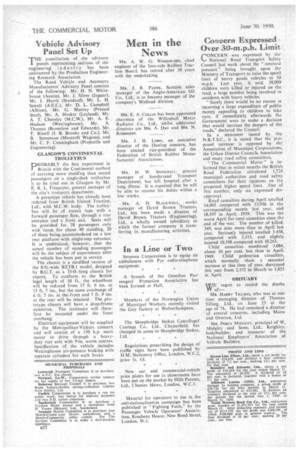GLASGOW'S CONTINENTAL •
Page 40

If you've noticed an error in this article please click here to report it so we can fix it.
DROBABLY the first experiment in
• B r ita i n with the Continental method of carrying more stand:ng than seated passengers on a single-deck trolleybus is to be tried out in Glasgow by Mr. E. R. L. Fitzpayne, general manager of the city's transport department.
A prototype vehicle has already been orderedfrom British United Traction, Ltd., with M.C.W. body. The trolleybus will be of transit type with a forward passenger flow, through a rear entrance and a ,front exit. Seats will be provided for 28 passengers only with room for about 40 standing, 20 of these being-accommodated on a low rear platform with single-step entrance. It is understood, however, that the actual number of standing passengers will be the subject of experiments after the vehicle has been put in service.
The chassis is a modified version of the 8-ft.-wide RETB.I model, designed by B.U.T. as a 33-ft.-long chassis for export. To conform to the British legal length of 30 ft., the wheelbase will be reduced from 17 ft. 6 ins. to 15 ft. 7 ins., but the same overhangs of 6 ft. 7 ins, at 'the frontand 7 ft. 9 ins. at the rear will be retained. The prototype chassis will have a drop-frame extension. The resistance will -therefore be mounted under the front overhang.
Electrical equipment will be supplied by the Metropolitan-Vickers concern and will consist of a 130 h.p. main motor to drive through a heavyduty rear axle with 9-in, worm centres. Specification of the vehicle includes Westinghouse air-pressure braking withseparate cylinders for each brake.




























































































































